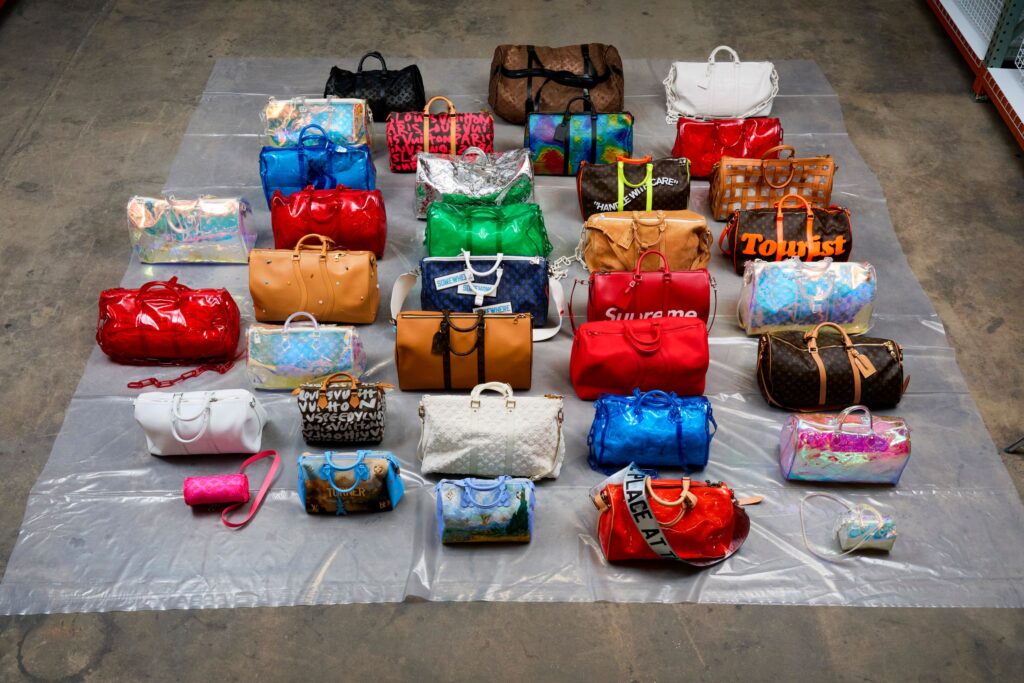Earlier this year, I was buzzed into a nondescript warehouse somewhere in the Midwest. Inside, past several additional security doors and a locked gate, I entered a private storage facility where thousands of identical gray boxes filled a maze of floor-to-
ceiling shelves.
My mind kept turning to the final shot in Raiders of the Lost Ark. Few people beyond the small staff in white gloves who had carefully organized the contents within would have known that I was looking at one of the most significant and valuable repositories of modern fashion history: Virgil Abloh’s sneaker collection.
This was my introduction to the Virgil Abloh Archive (VAA)—or at least about half of it. Following a three-year effort to track down and catalog the late designer’s vast materials, the enormous archive spreads between secret facilities in two different Midwestern cities. Collectively, they house approximately 20,000 garments, shoes, bags, documents, pieces of art, and personal mementos that belonged to the most prolific creative force of his time.
Abloh worked with a legacy in mind. Well before he was the world-famous subject of museum retrospectives, he had a keen instinct of what to preserve, placing his college notebooks and portfolios from architecture school in a cardboard box that eventually made it into one of his many storage units. “Alongside Virgil’s practice as a creator, he tended to work and think archivally,” says collaborator Mahfuz Sultan, who serves as co-director of the archive.
By the time he founded Off-White, and then as the artistic director of Louis Vuitton Men’s, everything Abloh touched was filed away, from the final pieces to the notes, models, and prototypes along the way. According to his former chief of staff Athiththan Selvendran, now chief operating officer of Virgil Abloh Securities (VAS), which oversees the archive, “Nothing was discarded, nothing was not important.” It was an unspoken rule, a critical part of Abloh’s intensely iterative creative process.
At the same time, he was equally an archivist of others, obsessively purchasing the work of designers he admired. Selvendran describes a steady stream of online purchases arriving wherever they were working—or simply going straight to storage, barely passing through Abloh’s hands. In Chicago, when I unwrapped a stash of important Raf Simons coats, over a dozen in all, I realized the tags were still attached.


